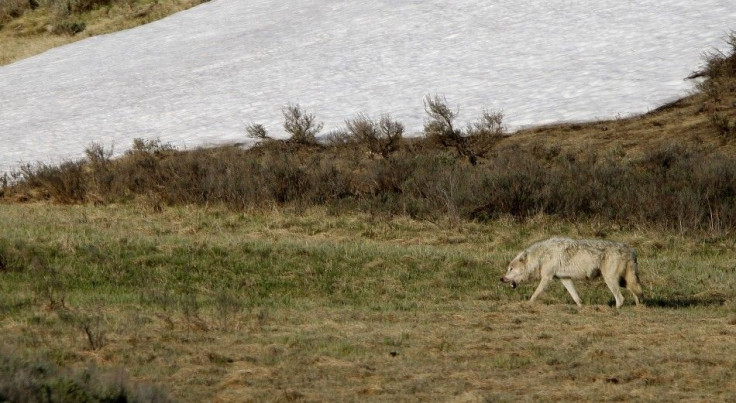Wolves Show How Environment Changes Individuals, Populations Together

Since park rangers brought wolves back to Yellowstone National Park in 1995, the reintroduced predators have become a microcosm of how animals adapt to - and possibly survive - ecological and environmental changes.
By tracking 280 radio-collared wolves over an 11-year span, researchers got a glimpse of how long-term environmental changes impacted the animals and found that both population size and attributes such as body size and coat color change together with the environment.
Previously, researchers knew that the environment impacted either population size or individual attributes, but this is the first study, the researchers said, that connects all three together.
We hope (the study) shows biologists how biologists can simultaneously study ecology and evolution simultaneously in nature, and we hope that this means we get better at predicting how a range of species - not just wolves - are likely to be affected by environmental change, Tim Coulson of Imperial College London and lead author, wrote to International Business Times in an email. We see this work as a first step on a journey to achieve here aims.
The researchers also found that averages in the overall environment changed the wolves more than shorter-term environmental variability.
The only predictions we felt happiest making about Yellowstone wolves in particular were that they would be affected more (from) a permanent change in the average environment, rather than changing how much the environment varies from one year to the next, Coulson wrote.
The journal Science published the study online Thursday.
The research group park conditions into account, labeling each year on a range from good years to bad years, and studied how those different conditions affected the wolves.
The project used a new model that compared data on the wolf characteristics to the environmental conditions they lived in.
They found that a change in the environment can affect the wolves on ecological and evolutionary levels, and that a single change in the environment can have multiple effects on one wolf. They also found that changes in the average environmental conditions will affect the size of the Yellowstone wolf population.
The novelty of the new model is that it looks at how the frequencies of changes in environmental conditions along the 'good to bad' year continuum simultaneously impact many wolf characteristics, Coulson said in a statement.
Gray wolves are on the endangered species list in certain parts of the U.S. Those in the Rocky Mountain region were removed from the list earlier this year.
There are more than 5,000 wolves living on the U.S. mainland, according to the conservation group Defenders of Wildlife.
Thanks to the reintroduction of wolves in 1995, Yellowstone National Park is one of the most favored places to see and hear wolves in the native habitat, the group says on their Web site.
Still, the group wishes to see wolves brought back into other parts of the U.S.
Although wolves are making a comeback in portions of the lower 48 states, wolf restoration should continue to be considered in areas of suitable habitat from which they are still absent: the Northeast, southern Rockies and Pacific Northwest, the group says on its Web site.
The bewildering complexity of changes in wolf populations due to environmental change may be disheartening at first glance, Sebastian Schreiber, evolutionary biologist at the University of California, Davis, wrote in an accompanying note in Science. But Schreiber, not connected to the study, added he was optimistic that the models may identify population and genetic dynamics based on the environmental context.
Coulson believes this research could tell a thing or two about humans.
As just one example, the methods developed through this study might ultimately be used to help predict the impacts of the ongoing obesity epidemic on survival and fertility rates and the resulting influence of those variables on the growth rate of selected human populations, a statement on the study reads.
© Copyright IBTimes 2024. All rights reserved.





















